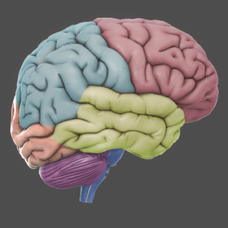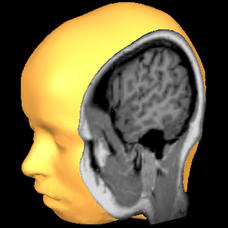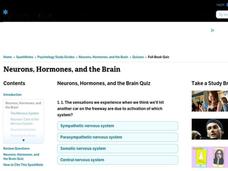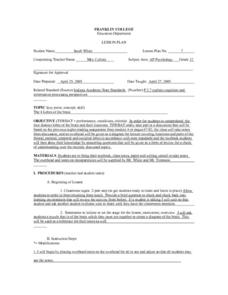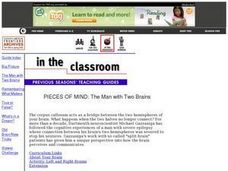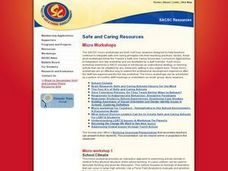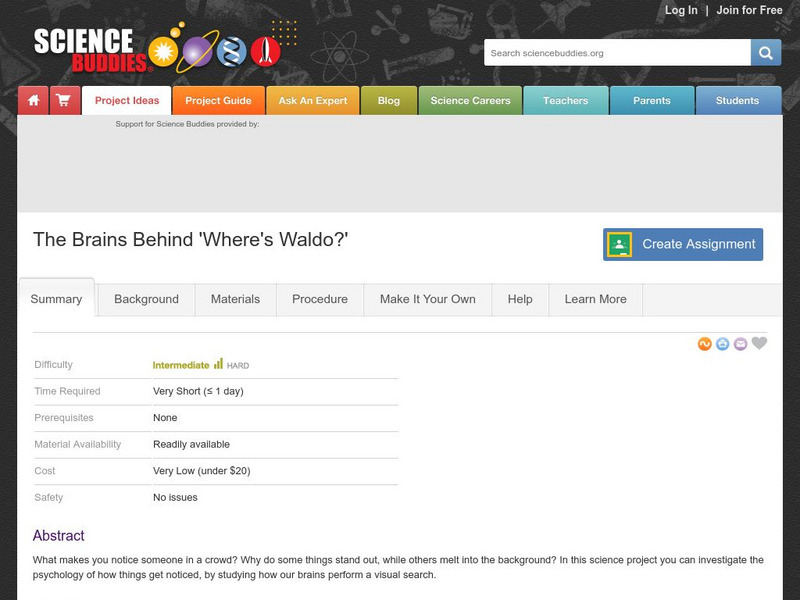Cold Spring Harbor Laboratory
3D Brain
Imagine being able to rotate the brain and view interior structures without dissection! This tool allows anatomy masters to do just that. They also learn about the associated functions, disorders, and symptoms of damage to each...
Open Colleges
Your Brain Map: Strategies for Accelerated Learning
The brain is a complex organ with many different structures and functions. An interactive diagram allows learners to explore the different structures while pop-ups describe their functions. Secondary interactives show the structures of...
Kenan Fellows
Unit 4: The Brain
Drugs interact with the brain to alter moods, emotions, and behaviors by changing the brain's chemistry, perceptions, and interactions. The final lesson in the Pharmacology unit shows scholars experiments, has them complete four labs,...
Rainer Goebel
Brain Tutor 3D
The human brain is staggeringly complex, and its structure can seem impossible to grasp. This user-friendly app allows for exploration of the brain's anatomy, providing nomenclature, 3-D mapping, and functions.
Curated OER
This Is Your Brain on Pot
Students explore the causes and effects of marijuana addiction and research how THC affects different areas of the brain. They synthesize their knowledge by creating print advertisements that inform teenagers about the physiologic danger...
Curated OER
Neurons, Hormones and the Brain
In this psychology learning exercise, students complete a 10 multiple choice quiz on neurons, hormones and the brain. They identify its different parts and functions.
Curated OER
The Four Lobes of the Brain
Twelfth graders are introduced to the four lobes of the brain and their functions. As a class, they participate in a discussion about an article they read earlier. They answer comprehension questions as a way to review the material.
Curated OER
Left and Right Brains
Students research the part of the brain known as the corpus callosum. The part of the brain that connects the left and right brain, students investigate its functions and how data passes from one side to another.
Curated OER
The Man Who Mistook His Wife for a Hat
Four scenarios of unusual human behaviors are given to your psychology class. Based on their knowledge of brain anatomy and function, they consider what parts of the brain might be affected in order to result in the behaviors. This case...
Curated OER
Introduction to Psychology and Sigmund Freud
Students learn about psychology. In this unconscious mind lesson, students examine the life and theories of Sigmund Freud. Students define psychoanalysis, the conscious mind, the unconscious mind, Freudian slips, the ego, the...
Curated OER
How Alzheimer's Affects the Brain
Learners study how Alzheimer's affects different parts of the brain, sketch a healthy neuron and its parts, and diagram brain changes during the early and late stages of Alzheimer's.
Curated OER
Neurons, Hormones and the Brain
In this psychology worksheet, students complete 5 short answer questions about how the neurons and hormones work together together with the brain.
Curated OER
Sensory Competition
Students explore examining something through one sense but experience competing input with another. The lesson also shows the plasticity of the brain and other cognitive functions.
Florida Department of Health
Understanding the Risk of Substance Abuse Unit
Teenage brains are different! Understanding that the teenage brain is still developing and thus more impacted by substance abuse is the key concept in a three-lesson high school health unit. Participants learn about how the brain and...
Curated OER
It's All in Your Mind
Pupils investigate the definition of memory. In this memory lesson students investigate strategies to improve memory as well as examine what the difference is between a short-term memory and a long-term memory.
PBS
Stories of Painkiller Addiction: Contemplating Nature vs. Nurture
Does having an addict in your family make it more likely to become one yourself? Explore the genetic risk factors, as well as the prominent environmental influences, for substance addiction in a lesson that encourages awareness and open...
Curated OER
Writing Exercise: How to Spot a Loser Sentence
In this writing skills instructional activity, class members read sentences about developmental psychology that need revisions and then revise them in order to make them better. The 11 sentences range from the humorous to the...
Curated OER
States of Consciousness
In this psychology instructional activity, students write short answers to 5 questions on states of consciousness. They list the different classes of recreational drugs and functions of sleep.
Curated OER
Show 303: New Research into Dyslexia
Students explore the causes of dyslexia. They view CT sans and MRIs to view the brain and how it responds. Students read reports about dyslexia. They discuss the nature of dyslexia, its cause, how to diagnose it, and its permanency.
Curated OER
The Human Memory
This is a well-designed, creative lesson to help students learn more about the human memory. Working in pairs, students complete tasks and gather data. Excellent websites for resources are also provided.
Curated OER
School Climate
Students examine school climate in relation to the physical structure of the school building. A Luann cartoon can be used to stimulate thinking and promote discussion which focuses on feelings of alienation that can occur in large high...
Georgia Department of Education
Ga Virtual Learning: Psychology: Biological Foundations
Virtual learning course on human biology and brain function and how it affects our behaviors. Extensive collection of engaging materials, assignments, and activities for review.
Science Buddies
Science Buddies: The Brains Behind 'Where's Waldo?'
What makes you notice someone in a crowd? Why do some things stand out, while others melt into the background? In this experiment you can investigate the psychology of how things get noticed, by studying how our brains perform a visual...
National Institutes of Health
Spatial Short Term Memory Pinpointed in Brain
Examine this press release to understand methods used in the science of psychology to pinpoint functions of the brain.
